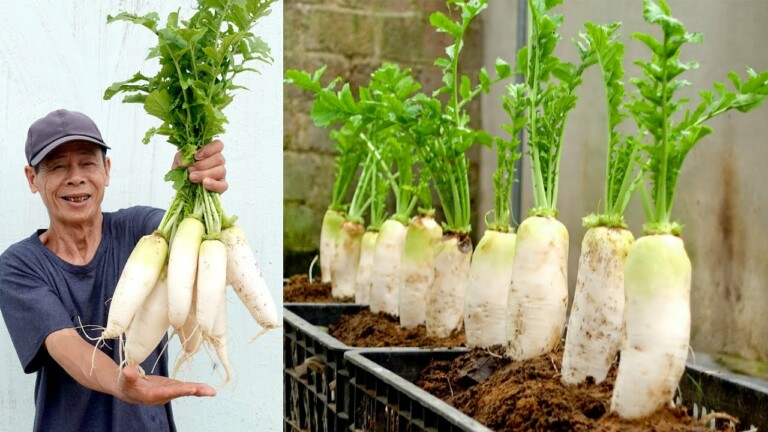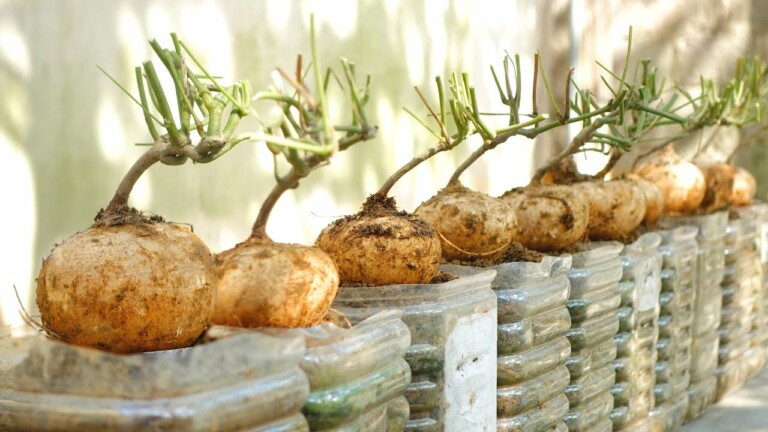How I Grow Carrots at Home for High Yield, Very Easy!
Welcome to our blog post, where we will be sharing our experience on how we grow carrots at home for a high yield. If you are a gardening enthusiast like us, then you know how satisfying it is to witness the fruits of your labor right in your own backyard. Growing carrots is not only a rewarding hobby, but it can also provide you with fresh and organic produce. In this post, we will take you through the step-by-step process that we follow to achieve a bountiful harvest of carrots, making it an easy and fulfilling endeavor. So, let’s get started!
Introduction
Growing your own vegetables at home can be a rewarding and satisfying experience. Not only do you have the opportunity to savor the taste of freshly harvested produce, but you also have full control over the growth process. Today, we want to share with you our techniques for growing carrots at home for high yield. We mix the soil in a specific way, which greatly contributes to the success of our carrot crops. Additionally, we have created a video tutorial that outlines the steps involved in growing carrots. This tutorial is packed with valuable tips and tricks to ensure a bountiful harvest. Are you ready to learn how to grow carrots at home? Let’s get started!
Soil Preparation: The Key to Success
When it comes to growing carrots, the quality of the soil plays a crucial role. We mix the soil in a specific way to create the perfect growing environment for our carrots. Here’s how we do it:
-
Choose a suitable location: Carrots require full sun exposure, so select a spot in your garden that receives at least 6-8 hours of direct sunlight.
-
Loosen the soil: Carrots need loose, well-draining soil to grow properly. Use a garden fork or tiller to break up any compacted soil and remove rocks and debris.
-
Add organic matter: Mix in compost or well-rotted manure to enrich the soil with essential nutrients. This will promote healthy carrot growth and improve soil structure.
-
Adjust the pH level: Carrots prefer a slightly acidic to neutral soil pH (around 6.0-7.0). Test your soil and make adjustments if necessary by adding lime or sulfur.
-
Remove weeds: Before planting your carrot seeds, make sure to remove any weeds or grasses that may compete for nutrients and space.
Planting Carrot Seeds
Now that your soil is ready, it’s time to plant your carrot seeds. Follow these steps to ensure successful germination and growth:
-
Sow the seeds: Create furrows or trenches about half an inch deep, spacing them 2-4 inches apart. Gently place the carrot seeds along the furrows, aiming for a distance of about 1-2 inches between each seed.
-
Cover with soil: Carefully backfill the furrows with soil, making sure to cover the seeds completely. Lightly tamp down the soil to ensure good seed-to-soil contact.
-
Water thoroughly: Use a gentle spray or mist setting on your watering can or hose to moisten the soil. Keep the soil consistently moist throughout the germination period, which usually takes 7-14 days.
-
Thin out seedlings: Once the seedlings have reached a couple of inches in height, thin them out to allow enough space for proper root development. Aim for a spacing of 2-3 inches between each carrot plant.
Taking Care of Your Carrot Crop
To maximize the yield of your homegrown carrots, it’s important to provide optimal care throughout the growing season. Here are some essential tips to keep in mind:
-
Watering: Carrots require regular, even moisture to prevent them from becoming dry or woody. Aim to keep the soil consistently moist, but avoid overwatering, as it can lead to root rot.
-
Mulching: Applying a layer of organic mulch around your carrot plants can help conserve moisture, suppress weed growth, and maintain a steady soil temperature.
-
Fertilizing: Carrots are not heavy feeders, but a light application of balanced organic fertilizer halfway through the growing season can provide a nutrient boost.
-
Pest control: Keep an eye out for common carrot pests like carrot flies and aphids. Use organic pest control methods such as row covers or companion planting to deter these unwanted visitors.
-
Harvesting: Carrots are ready for harvest when they reach the desired size and color. Gently loosen the soil around the carrots, and carefully pull them out by the foliage. Enjoy the fruits of your labor!
Conclusion
Growing carrots at home for a high yield is easier than you might think. By paying attention to soil preparation, proper planting techniques, and providing adequate care, you can enjoy an abundance of delicious homegrown carrots. And don’t forget that we have a video tutorial available for you to watch, where we demonstrate step-by-step how to grow carrots at home. We hope this information has been useful for you. Thank you for watching our video, and be sure to subscribe to our channel for more content on gardening tips and tricks.
FAQs
- Can I grow carrots in containers?
Yes, carrots can be grown successfully in containers as long as the container is deep enough to accommodate their root growth. Aim for a depth of at least 12 inches.
- How long does it take for carrots to grow?
Carrots typically take 60-80 days to reach maturity, depending on the variety. Baby carrots can be harvested earlier, while larger varieties require more time.
- Do carrots need full sun?
Yes, carrots require full sun exposure to ensure optimal growth and development. Make sure they receive at least 6-8 hours of direct sunlight per day.
- How do I store harvested carrots?
Remove the green tops from the carrots and store them in a cool, dark place. You can store them in the refrigerator or in a root cellar for several weeks.
- Can I save carrot seeds for future planting?
Yes, carrot seeds can be saved for future planting. Allow the carrot plants to produce seed heads, harvest the seeds, and store them in a cool and dry place.






